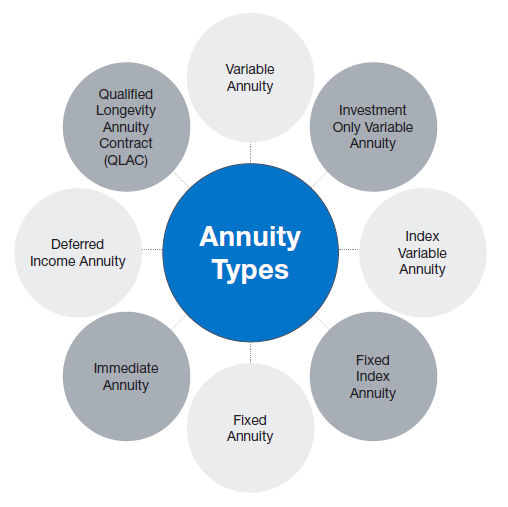Annuities and Divorce
- March 10, 2021
The process of a divorce can be complicated, both emotionally and financially. Factor together the complexities of a divorce and annuities, and you could end up navigating through a challenging time of reassessing your financial resources and goals.
Dividing an annuity or having to forfeit one during a divorce can have a long-term financial impact, especially if the annuity was originally purchased as an integral part of a retirement plan.
The following are some important facts to consider during the division process.
The Type of Annuity Purchased
There are many different types of annuities. Each has its own unique benefits and the valuation factors could influence how the annuity will be handled in the divorce. A single premium immediate annuity pays an immediate income stream for a set period of time. Immediate annuities are quite different from the more complicated valuations of variable or fixed annuities. Constructing the true present and future value of a variable or fixed annuity is complex, and the complexities increase if the contract is still subject to surrender charges, has been credited with a bonus or includes benefit riders.


When the Annuity was Purchased and the Source of Payment
An annuity purchased prior to marriage may not be subject to a division of property. However, if your annuity was purchased during your marriage, it may likely be included in the division of property. That may mean a contract split or total forfeiture by you or your spouse, depending on other conditions.
The source of the money used for the annuity’s original premium payment may also influence how the annuity is handled in a property division. Was the money inherited? If the inheritance used to start the annuity was not commingled into a joint account, and no additional premium money was added from any joint account, the annuity will most likely be treated as sole and separate property of one spouse. In this case, it would usually not be included in the division of joint assets.
If your annuity was purchased during your marriage using qualified funds which were rolled over from any type of employer-sponsored qualified retirement plan such as a pension, 401(k) or 403(b) into an individual retirement account (IRA), the IRA rollover annuity may fall under the division of joint assets. If so, the annuity would undergo an analysis of present and future values in order to determine the most equitable assessment prior to division.
If you purchased your annuity directly through an insurance carrier as an IRA rollover during your marriage, the issuing insurance carrier will determine how the contract will be split, pursuant to a filed domestic relations order. These rules will vary from carrier to carrier. If you are not the owner of the annuity contract, your request for information will not be honored by the insurance carrier unless you have a valid domestic relations order or written legal authorization, signed by the annuity owner, to allow access to the details and values of the contract.
Non-qualified annuities are funded using after-tax dollars. The issuing insurance carrier will usually require a qualified domestic relations order (QDRO) to split a non-qualified annuity.
Transfer Ownership of the Contract
After analyzing the value of your annuity it might make sense to transfer ownership of the annuity to one spouse and use equivalent marital property to supplement the financial asset of the other spouse. This will depend on what other assets are available, but can be an option to avoid splitting an existing annuity contract.
It is important to understand exactly what features and benefits a new split contract will provide before a decision to proceed is made. Read the newly proposed contract in its entirety, and be certain to have a thorough understanding of the benefits, features, withdrawal options and any potential tax liabilities.
Divorce can be difficult but an Oppenheimer Financial Professional will guide you through the planning process, providing you with the confidence that your financial future will be secured.
Sources & Disclosure
© 2021 Oppenheimer & Co. Inc. Transacts Business on All Principal Exchanges and Member SIPC. All rights reserved.
This brochure is intended for informational purposes only. The material herein has been obtained from various sources believed to be reliable but is not guaranteed by us as to accuracy or authenticity. All information provided and opinions expressed are subject to change without notice. No part of this brochure may be reproduced in any manner without written permission of Oppenheimer & Co. Inc. (“Oppenheimer”). Neither Oppenheimer nor any of its affiliates or employees provide legal or tax advice. However, your Oppenheimer Financial Advisor will work with clients, their attorneys and their tax professionals to help ensure all of their needs are met and properly executed. Investors should consult with their legal and/or tax Advisors before implementing any wealth transfer strategies. Securities are offered through Oppenheimer.
Variable annuities are sold by prospectus only, which describes the risks, fees and surrender charges that may apply. Investors should consider the investment objectives, risk and charges of the investment company carefully before investing. The prospectus contains this and other information. You may obtain a prospectus from your Oppenheimer Financial Professional. Please read carefully before investing.
Oppenheimer may receive compensation in the form of fees or commissions for services referred to and performed by our strategic alliance firms. However, Oppenheimer and the firms mentioned herein are completely independent of each other. Oppenheimer Life Agency Ltd. is a wholly owned subsidiary of Oppenheimer & Co. Inc. This material is not a recommendation as defined in Regulation Best Interest adopted by the Securities and Exchange Commission. It is provided to you after you have received Form CRS, Regulation Best Interest disclosure and other materials.
Sources: